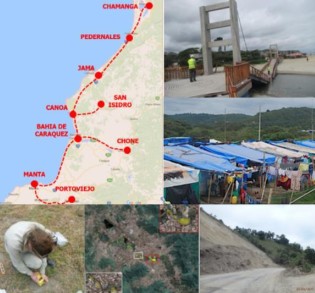Nina Jirouskova
Earthquake Engineering Field Investigation Team (EEFIT) mission to Ecuador

When people ask me: “Why did you choose to specialise in earthquake engineering”, I always say that I want to use my civil engineering and earth sciences skills to help communities be more resilient to those disasters, that are so difficult to model, predict and plan for. The challenge of modelling the risk makes this discipline technically challenging, and with the complexity of the mechanisms contributing to the losses and the level of unknowns associated with the results come the following questions. Firstly, how can we make sure that what we do is truly adapted to the local needs and will indeed help, and secondly, how close are our model assumptions from the reality and therefore, how reliable are results likely to be?
These questions have driven my research within the CDT in Sustainable Civil Engineering at Imperial College London, under Dr Peter Stafford’s supervision. The aim is to develop a seismic risk assessment framework optimised specifically on the needs of stakeholders susceptible to seismic impact assessment at any point of the seismic risk management cycle (e.g., preparedness, immediate response, mid-term response) in fields of activity as diversified as insurance, response and shelter aid, urban planning or policy making.
Being selected to join the Earthquake Engineering Field Investigation Team (EEFIT) mission in Ecuador early June was a great opportunity to better understand the reality of a community recovering from the aftermaths of a major seismic event. I would like to gratefully thank the CDT, the Dean of the Faculty of Engineering and the Old Centralian’s Trust for generous support which made my involvement possible.
The mission was challenging as much physically, surveying all day long in temperatures ranging from 35 to 40°C, as emotionally, when facing the consequences of the disasters and talking to the victims. In total, the seismic sequence of events led to about 700 fatalities, with more than 27,000 people injured, thousands of buildings heavily damaged, and approximately $3Billion USD economic loss estimated by the government.
However, it was also exceptionally rewarding at all levels. It allowed me to gain an insight in the field of how things are done and it helped me access a vast network of contacts keen to participate in the survey to build a stakeholder’s optimisation criteria model. It was also positive to see that my research seems to address current needs and interests, as I was asked by many institutions to update them on my progress to see how they could potentially utilise my work in the future. From a personal perspective, this experience will for ever remind me why I do what I do.


